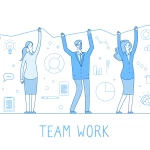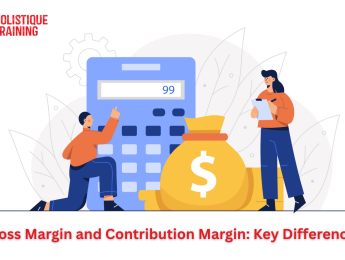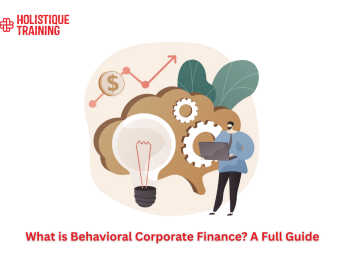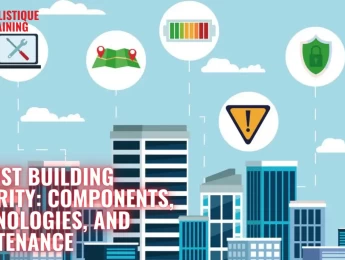- Table of Contents
- Introduction
- What Is Continuous Innovation?
- Why Is Continuous Improvement Culture Important in the Workplace?
- Enhanced Adaptability and Resilience
- Increased Innovation
- Employee Engagement and Satisfaction
- Increased Productivity
- Quality Improvement
- Reduced Costs
- Learning and Skill Development
- Positive Organisational Culture
- Customer Satisfaction
- Measurable Results
- The Benefits of a Continuous Innovation Culture
- Competitive Advantage
- Organisational Agility
- Enhanced Creativity and Collaboration
- Improved Problem-Solving
- Employee Engagement and Satisfaction
- Learning and Development
- How to Encourage Continuous Innovation as a Leader
- 1- Foster Psychological Safety
- 2- Set a Clear Vision
- 3- Provide Resources and Support
- 4- Recognise and Reward Innovation
- 5- Encourage Collaboration and Diversity
- Real-life Scenario: Encouraging Innovation in a Team
- Setting the Stage
- Creating a Safe Space
- Empowering Ownership
- Providing Resources and Support
- Recognising and Celebrating Innovations
- Encouraging Collaboration
- Innovation in the Workplace in 2024
- Advanced Technology Integration
- Remote Work and Virtual Collaboration
- Redefined Employee Experience
- Diversity and Inclusion
- Focus on Mental Health
- Emphasis on Sustainability
- Agile Work Processes
- Conclusion
Introduction
Innovation has always driven progress, enabling individuals and organisations to adapt, thrive, and create a better future. However, in today's rapidly evolving world, where constant change and competition are fierce, merely striving for occasional bursts of innovation is no longer enough. To truly flourish, businesses must embrace a culture of continuous innovation—a mindset that fosters ongoing improvement, creativity, and adaptation. In this blog post, we will explore the concept of continuous innovation, its significance in the workplace, and its myriad benefits. Additionally, we will discuss how leaders can foster an environment that encourages continuous innovation and reflect on the state of innovation in the workplace in 2024.
What Is Continuous Innovation?
Continuous innovation is the deliberate and ongoing process of generating new ideas, improving existing practices, and transforming operations to drive sustainable growth. Unlike sporadic innovation efforts, continuous innovation emphasises consistency, persistence, and a relentless pursuit of improvement. It involves adopting an open mindset that encourages experimentation, embraces change, and values learning from successes and failures. Rather than viewing innovation as a one-time event, continuous innovation recognises it as an integral part of an organisation's DNA woven into its everyday activities.
Why Is Continuous Improvement Culture Important in the Workplace?
A culture of continuous improvement in the workplace holds numerous significant advantages:
Enhanced Adaptability and Resilience
Embracing a continuous improvement culture means organisations are better prepared to face unexpected challenges. When employees are accustomed to change, they can quickly pivot strategies, products, or services in response to market fluctuations. This adaptability ensures that the company remains resilient even in turbulent times, reducing the risk of financial instability and enhancing long-term sustainability.
Increased Innovation
Continuous improvement fosters a culture where employees are encouraged to think creatively and experiment with new ideas. Regular brainstorming sessions and open communication channels generate innovative solutions. This constant influx of fresh ideas keeps the organisation dynamic and competitive, allowing it to develop groundbreaking products or services that meet evolving customer needs.
Employee Engagement and Satisfaction
Employees feel valued and recognised when they actively participate in the improvement process. Seeing their ideas implemented creates a sense of accomplishment and pride. Engaged employees are more committed to their work, leading to increased productivity. Moreover, a positive work environment where contributions are acknowledged enhances overall job satisfaction and encourages employees to invest their best efforts into their tasks.
Increased Productivity
Continuous improvement initiatives involve streamlining processes, eliminating bottlenecks, and optimising workflows. By identifying and removing inefficiencies, employees can work more productively. Moreover, a culture of continuous improvement encourages the use of tools and technologies that enhance efficiency, allowing employees to accomplish tasks more quickly and accurately.
Quality Improvement
Regular evaluation of processes and products ensures that quality standards are maintained or elevated. By promptly identifying and rectifying defects or issues, organisations can uphold their reputation for delivering high-quality goods or services. This commitment to quality satisfies existing customers and attracts new ones, fostering brand loyalty and positive word-of-mouth marketing.
Reduced Costs
Continuous improvement initiatives often involve analysing cost structures and identifying areas where expenses can be reduced without compromising quality or efficiency. Organisations can significantly lower operational costs by optimising resource allocation and reducing wastage. This reduction in overheads contributes directly to higher profitability and financial stability.
Learning and Skill Development
A culture of continuous improvement promotes a growth mindset among employees. Encouraging ongoing learning and skill development ensures the workforce remains versatile and adaptable. Employees gain new skills and knowledge through training programmes, workshops, or educational opportunities. This benefits the organisation with a skilled workforce and empowers employees to take on new challenges and responsibilities.
Positive Organisational Culture
A workplace that values continuous improvement fosters a positive atmosphere where employees feel motivated and inspired. When everyone is working towards common goals of growth and progress, it strengthens teamwork and collaboration. A positive organisational culture also attracts top talent, as job seekers are often drawn to workplaces where their contributions are valued and where they can actively participate in shaping the company's future.
Customer Satisfaction
Continuous improvement initiatives often include feedback mechanisms from customers. Organisations can tailor their products or services by actively listening to customer needs and concerns. Regularly exceeding customer expectations leads to higher satisfaction levels, fostering customer loyalty and positive reviews. Satisfied customers are more likely to become repeat buyers and advocates for the brand.
Measurable Results
Implementing continuous improvement involves setting clear, measurable goals and key performance indicators (KPIs). Regularly tracking these metrics provides organisations with valuable insights into the effectiveness of their improvement efforts. Data-driven decision-making ensures that the organisation can make informed choices, identify areas that require further attention, and celebrate achievements, thus maintaining a proactive approach to improvement.
Innovation Key Performance Indicators (KPIs) | Description | Measurement Metric |
Ideation Rate | Rate of new ideas generated per month. | Number of ideas per month |
Implementation Efficiency | Speed of turning ideas into tangible outcomes. | Time taken for execution |
Employee Engagement in Innovation | Percentage of staff actively participating in innovation projects. | Participation rate (%) |
Innovation Impact on Revenue | Revenue increase attributable to innovation. | Percentage increase (%) |
Customer Satisfaction with Innovations | Customer feedback rating for innovative products/services. | Customer satisfaction score (%) |
Table 1: Important Workplace Innovation KPIs
Incorporating these aspects into the workplace strengthens the organisation internally and enhances its reputation externally, leading to sustained growth and success.
The Benefits of a Continuous Innovation Culture
Embracing a culture of continuous innovation yields numerous advantages for organisations. Let's explore some of the key benefits:
Competitive Advantage
Organisations can gain a competitive edge by constantly seeking ways to improve their products, services, and processes. Continuous innovation enables businesses to stay ahead of the curve, deliver exceptional customer experiences, and drive customer loyalty.
Organisational Agility
In today's fast-paced world, organisations need to be agile and adaptive. A culture of continuous innovation fosters agility by encouraging teams to respond swiftly to market shifts, customer demands, and technological advancements. This flexibility allows for quick adaptations, scalability, and the ability to seize emerging opportunities.
Enhanced Creativity and Collaboration
A continuous innovation culture nurtures creativity by allowing employees to think outside the box, experiment with new approaches, and share their perspectives. It fosters a collaborative environment where diverse ideas and insights are valued, promoting inclusivity, risk-taking, and a collective drive toward excellence.
Improved Problem-Solving
Continuous innovation encourages a proactive approach to problem-solving. It empowers employees to identify and address challenges in real time, leading to more efficient and effective solutions. Over time, this mindset permeates the entire organisation, enabling teams to tackle complex problems with confidence and creativity.
Employee Engagement and Satisfaction
When employees are allowed to contribute their ideas and witness the impact of their innovations, it instils a sense of ownership and purpose. A continuous innovation culture enhances employee engagement, motivation, and satisfaction. It creates a stimulating work environment where individuals feel valued, challenged, and empowered.
Learning and Development
A culture of continuous innovation promotes a learning environment where personal and professional growth is encouraged. Employees are inspired to acquire new skills, stay relevant, and embrace change. This focus on learning benefits individuals and strengthens the organisation's collective knowledge and capabilities.
A continuous innovation culture drives organisations toward growth, adaptability, and excellence. In fact, a whopping 84% of executives recognise the critical significance of innovation as a cornerstone of their growth strategy, according to Viima. It fosters competitive advantage, enhances organisational agility, boosts employee engagement, and encourages continuous learning and improvement. By embracing this culture, businesses can position themselves as industry leaders and successfully navigate the ever-evolving challenges of the modern world.
How to Encourage Continuous Innovation as a Leader
Leaders play a pivotal role in cultivating a culture of continuous innovation within their organisations. Here are some key strategies to promote and encourage continuous innovation:
1- Foster Psychological Safety
Creating a workplace environment where employees feel psychologically safe is paramount. Leaders should actively promote open communication, where team members can freely express their ideas, concerns, and opinions without fear of criticism or retribution. Encouraging a culture where mistakes are viewed as opportunities to learn rather than as failures fosters an atmosphere where employees are more willing to take risks and explore innovative solutions. By demonstrating that honest dialogue is valued and respected, leaders empower their teams to engage in the innovation process actively.
2- Set a Clear Vision
A clear and inspiring vision acts as a guiding star for innovation efforts. Leaders should articulate a compelling vision emphasising continuous innovation within the organisation's overall goals and values. When employees understand how their innovative endeavours align with the broader mission, they are more motivated to contribute creatively. The vision is a source of inspiration, providing employees with a sense of purpose and direction as they channel their efforts toward innovative initiatives.
3- Provide Resources and Support
Leaders must invest the necessary resources, tools, and training to facilitate innovation effectively. Whether it's financial support for research and development, access to cutting-edge technologies, or specialised training programmes, providing these resources empowers employees to explore and implement their innovative ideas. Additionally, leaders should eliminate bureaucratic barriers and hierarchies that might hinder the swift implementation of innovative solutions. Offering mentorship, guidance, and a supportive work environment ensures employees have the assistance they need to turn their innovative concepts into reality.
4- Recognise and Reward Innovation
Recognition serves as a powerful motivator for employees. If that wasn’t true, global corporations wouldn’t have invested $46 billion in employee recognition initiatives. Leaders should celebrate and acknowledge individuals and teams who exhibit innovative thinking and deliver tangible outcomes. Recognition can come in various forms, such as financial incentives, promotions, public praise, or awards. Highlighting these achievements validates the employees' efforts and inspires others in the organisation. By visibly rewarding innovation, leaders reinforce the value of creative thinking and encourage a culture where innovation is recognised and integral to the organisation's identity.
5- Encourage Collaboration and Diversity
Collaboration and diversity are catalysts for innovation. Leaders should actively promote a collaborative culture by encouraging cross-functional teamwork and interdisciplinary collaboration. By bringing together individuals from diverse backgrounds, disciplines, and experiences, leaders stimulate the exchange of varied perspectives and ideas. Embracing diversity fosters a rich tapestry of thoughts and approaches, sparking creativity and innovation. Encouraging collaboration across departments and fostering an inclusive environment where everyone's voice is heard results in a wide range of innovative solutions to complex problems.
Real-life Scenario: Encouraging Innovation in a Team
To illustrate the practical application of fostering innovation as a leader, let's consider a real-life scenario:
Imagine a software development company led by a visionary CEO, Sarah. Sarah understands the importance of continuous innovation in the technology industry and strives to create an environment that encourages her team to think creatively and push boundaries.
One day, Sarah notices that her team has been working on a project for several months without making significant progress. The team seems stuck in a routine, lacking the spark of innovation needed to deliver groundbreaking solutions. Recognising the need to encourage innovation, Sarah takes proactive steps to transform the team's mindset.
Setting the Stage
Sarah gathers the team for a meeting and openly acknowledges their challenges. She emphasises the importance of innovation and shares her belief in their ability to overcome obstacles and achieve remarkable results.
Creating a Safe Space
Sarah fosters psychological safety by assuring the team that mistakes and failures are valuable learning opportunities. She encourages open communication and active participation, creating a safe space for team members to share their ideas and concerns.
Empowering Ownership
Sarah delegates authority to individual team members, empowering them to take ownership of their work. She encourages autonomy, allowing each team member to explore and experiment with new approaches and ideas.
Providing Resources and Support
Sarah ensures the team has access to the necessary resources, such as training programmes, tools, and technologies. She invests in their professional development, providing opportunities for learning and growth.
Recognising and Celebrating Innovations
Sarah celebrates small wins and acknowledges innovative contributions made by team members. She encourages a culture of recognition and rewards, inspiring others to step up and contribute their innovative ideas.
Encouraging Collaboration
Sarah fosters collaboration by organising brainstorming sessions, cross-functional team collaborations, and knowledge-sharing activities. She promotes diversity of thought and encourages team members to build upon each other's ideas, sparking innovative solutions.
Over time, Sarah's efforts bear fruit as the team gradually becomes more engaged, innovative, and motivated. They start experimenting with different approaches, thinking creatively, and proposing novel ideas. This newfound culture of innovation leads to breakthrough solutions, improved productivity, and a stronger competitive position in the market.
In this scenario, Sarah's leadership and commitment to fostering innovation within her team demonstrate how a leader can inspire and empower employees to embrace continuous innovation. By creating an environment that encourages risk-taking, collaboration, and learning, leaders can drive their teams to achieve remarkable outcomes and foster a culture of sustained innovation.
Innovation in the Workplace in 2024
In 2024, innovation in the workplace was characterised by several key trends and transformations:
Advanced Technology Integration
Innovation is deeply intertwined with cutting-edge technologies like artificial intelligence (AI), machine learning (ML), and automation. Companies leverage these tools to automate repetitive tasks, analyse vast datasets, and gain actionable insights. AI and ML algorithms are being used to optimise processes, predict market trends, and enhance decision-making, leading to more efficient and effective business operations.
Remote Work and Virtual Collaboration
Remote work and virtual collaboration tools have become commonplace as the year 2020 catalysed numerous organisations, prompting them to rethink and redefine the employee experience completely, according to Gallup. This shift has also allowed organisations to tap into a global talent pool, enabling diverse perspectives and ideas to drive innovation.
Redefined Employee Experience
The focus on the employee experience has never been stronger. Organisations are reimagining work environments, embracing flexible work arrangements, and implementing hybrid models that blend remote and in-person work. By prioritising employee well-being and work-life balance, companies foster a positive atmosphere where creativity can flourish. Providing employees with a supportive work environment and recognising the importance of their holistic well-being is crucial for fostering a culture of innovation.
Diversity and Inclusion
Diversity and inclusion have become central pillars of innovative workplaces. Companies actively promote workforce diversity, recognising the value of different backgrounds, perspectives, and experiences. In diverse teams, creativity thrives as individuals bring unique viewpoints to problem-solving. Inclusive environments, where everyone feels valued and heard, encourage the open exchange of ideas, leading to innovative solutions to complex challenges.
Focus on Mental Health
Acknowledging the impact of mental health on overall well-being and productivity, organisations are investing in mental health initiatives. Providing access to counselling services, promoting stress management techniques, and fostering a supportive, stigma-free environment are becoming standard practices. Employees who feel psychologically safe and supported are likelier to engage in creative thinking and contribute innovative ideas.
Emphasis on Sustainability
Innovation is also seen in the context of sustainable practices. Companies invest in eco-friendly technologies, renewable energy sources, and circular economy models. Innovations in sustainable practices contribute to environmental conservation and resonate positively with environmentally conscious consumers, leading to new market opportunities and enhanced brand reputation.
Agile Work Processes
Agile methodologies, borrowed from software development, have found applications in various industries. Agile work processes emphasise adaptability, collaboration, and customer feedback. Teams work in iterative cycles, allowing for continuous improvement and adjustment based on real-time feedback. This agile approach fosters a culture of innovation by encouraging experimentation and rapid iteration of ideas.
In summary, workplace innovation in 2024 is characterised by a blend of advanced technologies, flexible work practices, a focus on employee well-being and diversity, sustainability efforts, and agile methodologies. Companies that embrace these trends are better positioned to navigate the complexities of the modern business landscape and drive meaningful and sustainable innovation within their organisations.
Conclusion
Continuous innovation has become an imperative for organisations seeking growth and success in today's dynamic business landscape. By fostering a culture of continuous innovation, businesses can unlock many benefits, including increased competitiveness, agility, and employee engagement. As leaders, it is essential to cultivate an environment that encourages experimentation, collaboration, and learning, empowering employees to embrace innovation as a way of life. In the ever-evolving world of 2024, organisations must adapt and harness continuous innovation to survive and thrive in the face of uncertainty.
Are you intrigued by the prospect of fostering a culture of innovation through holistic employee well-being? Elevate your organisation's potential with our exclusive course, ‘Technological Leadership for the Digital Era.’ Uncover the secrets of nurturing a motivated, innovative workforce, leveraging cutting-edge technologies, and ensuring your company thrives in the fast-paced digital landscape. Enrol now and transform your workplace into a hub of continuous improvement and groundbreaking innovation!



















